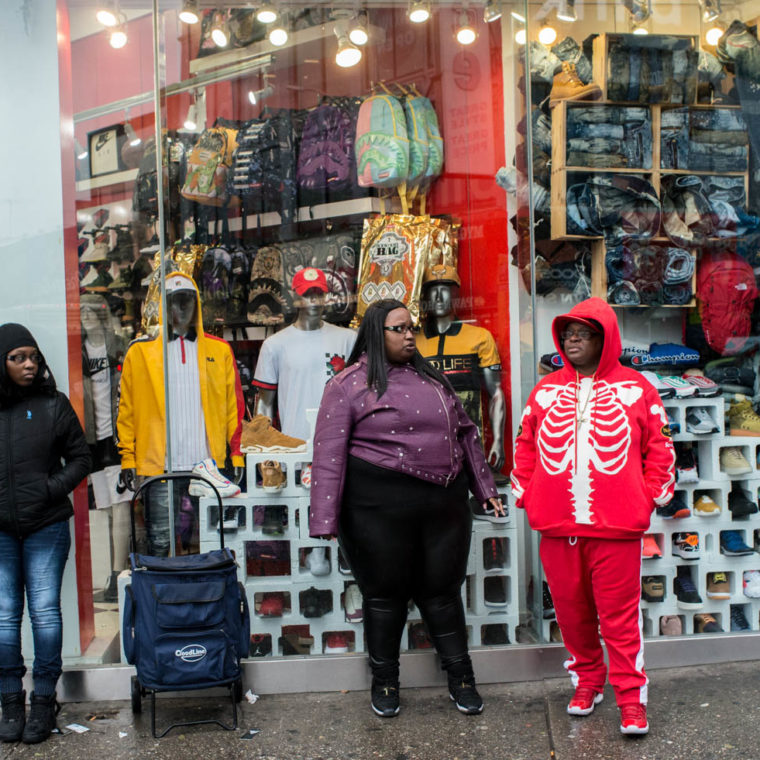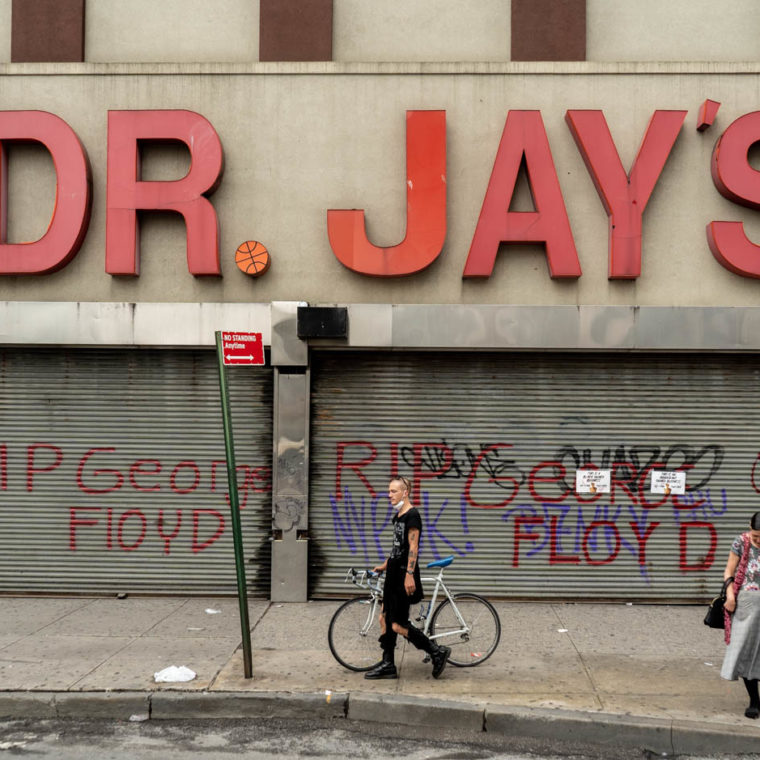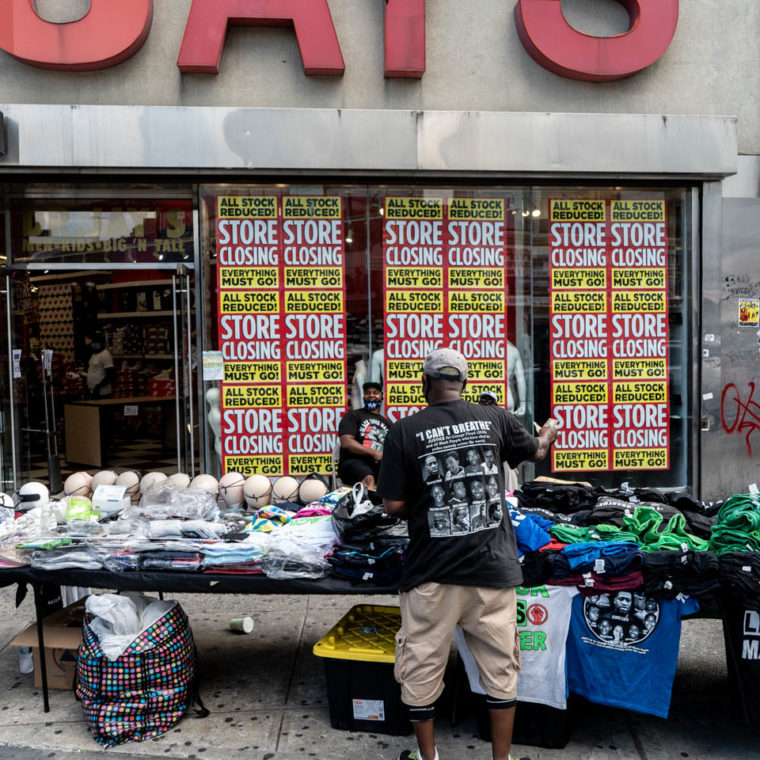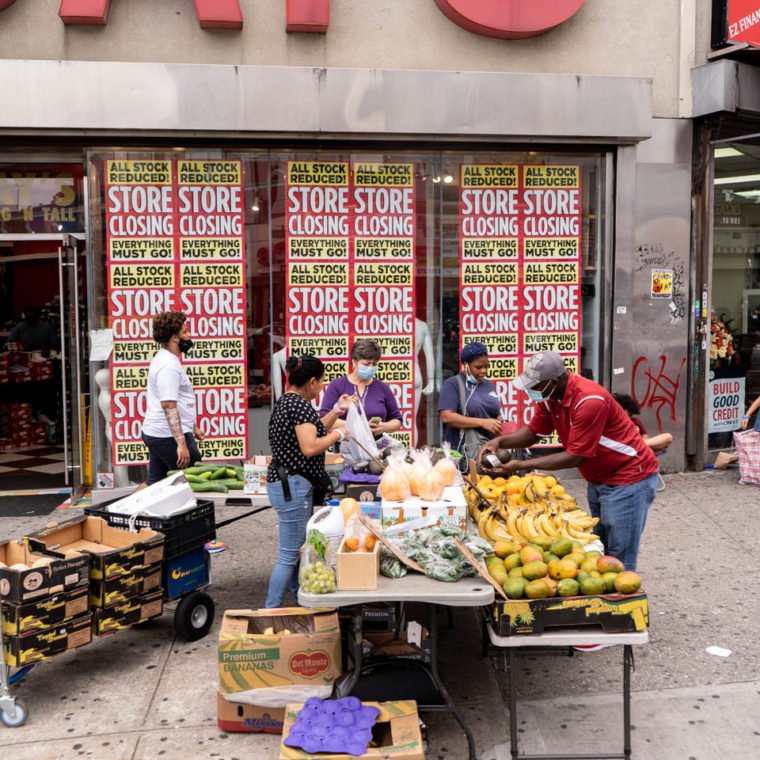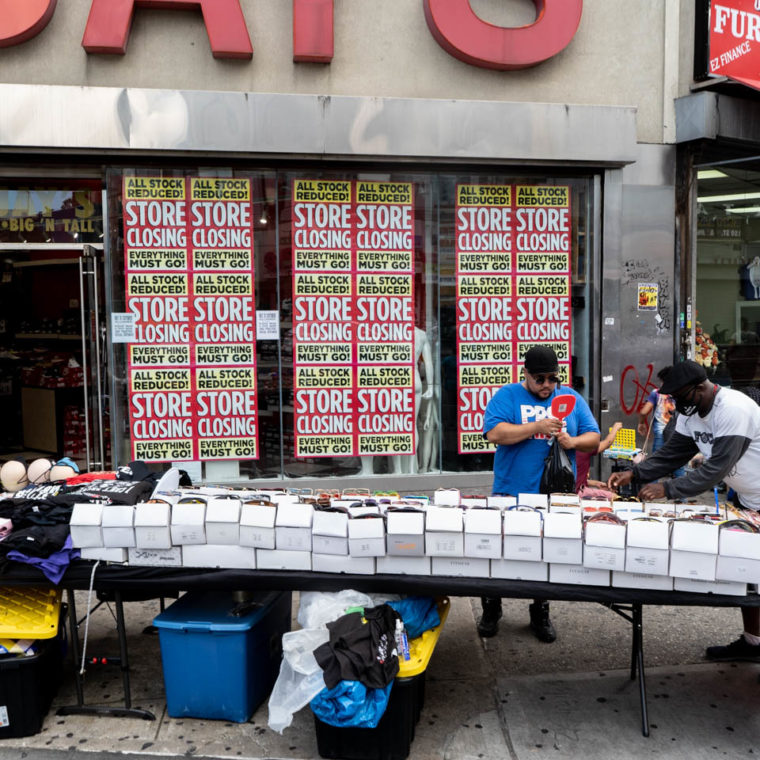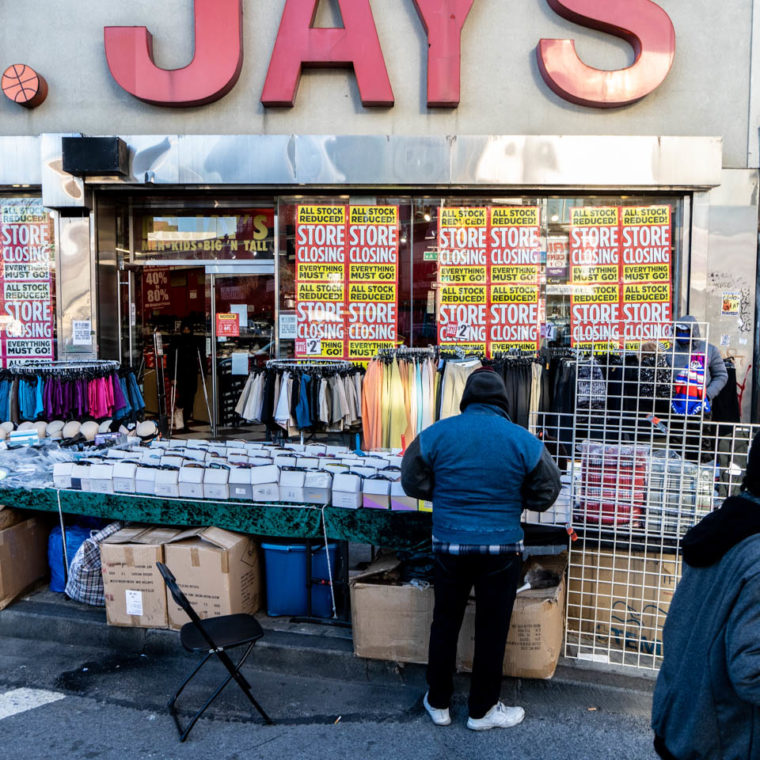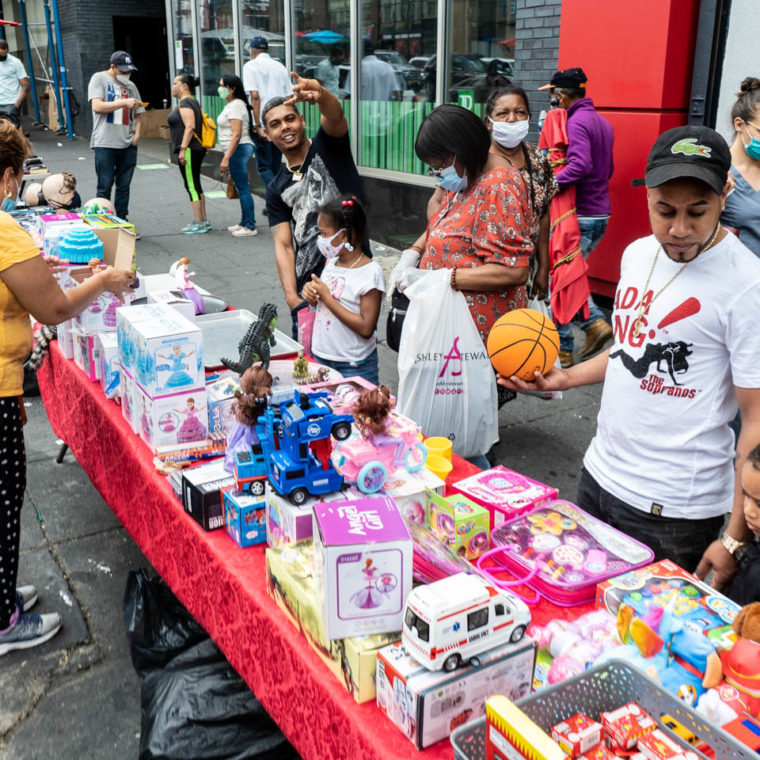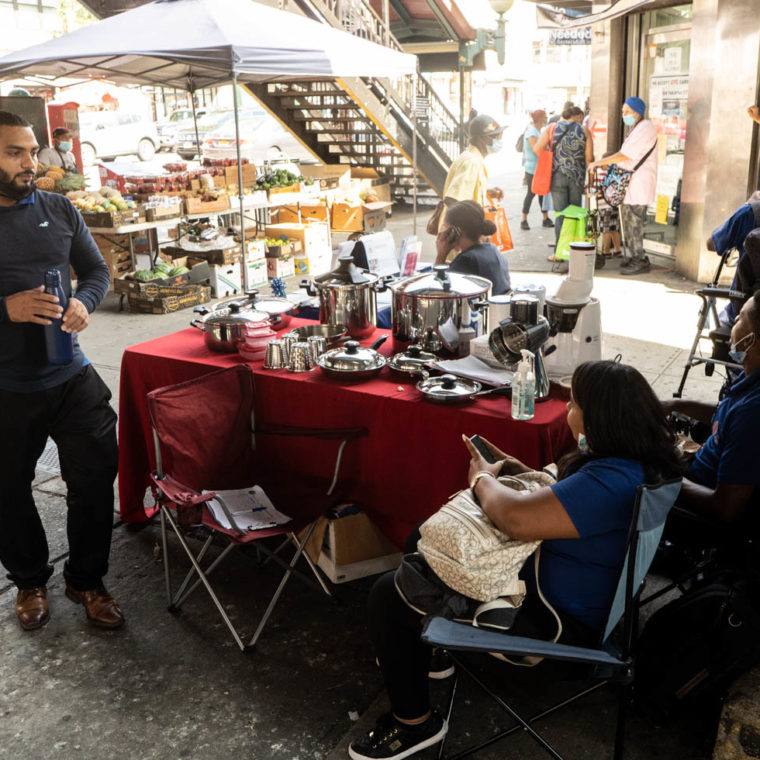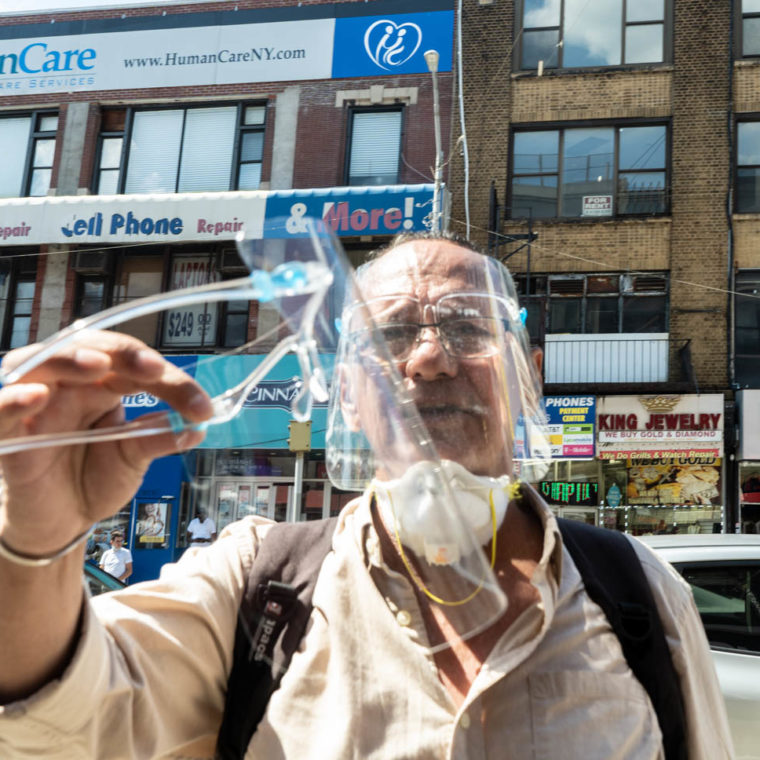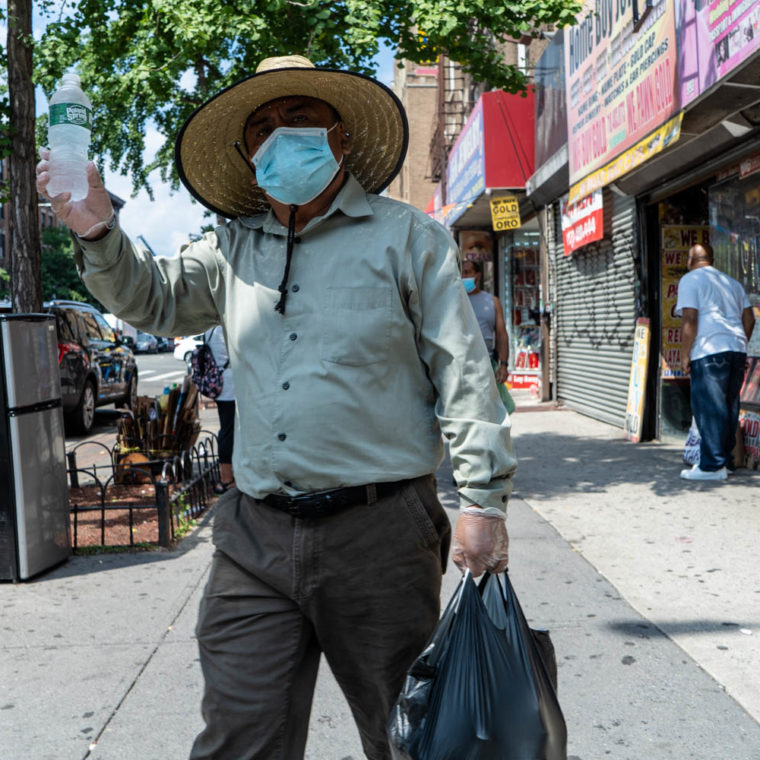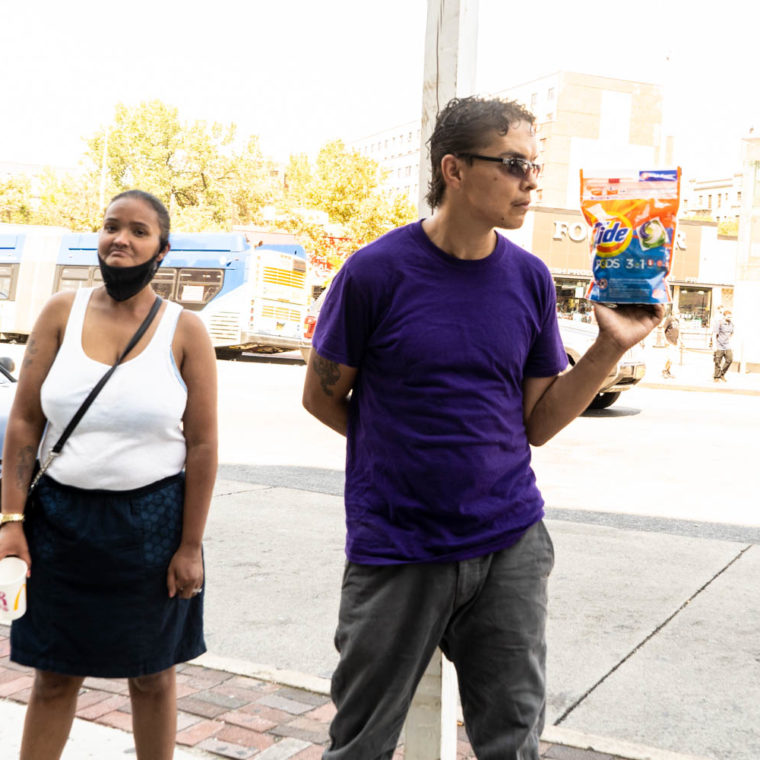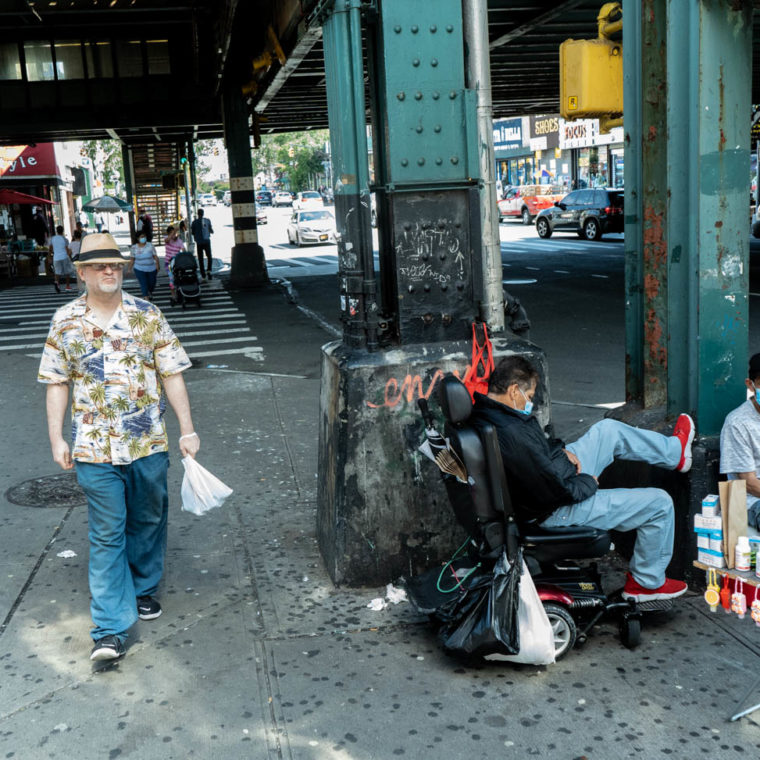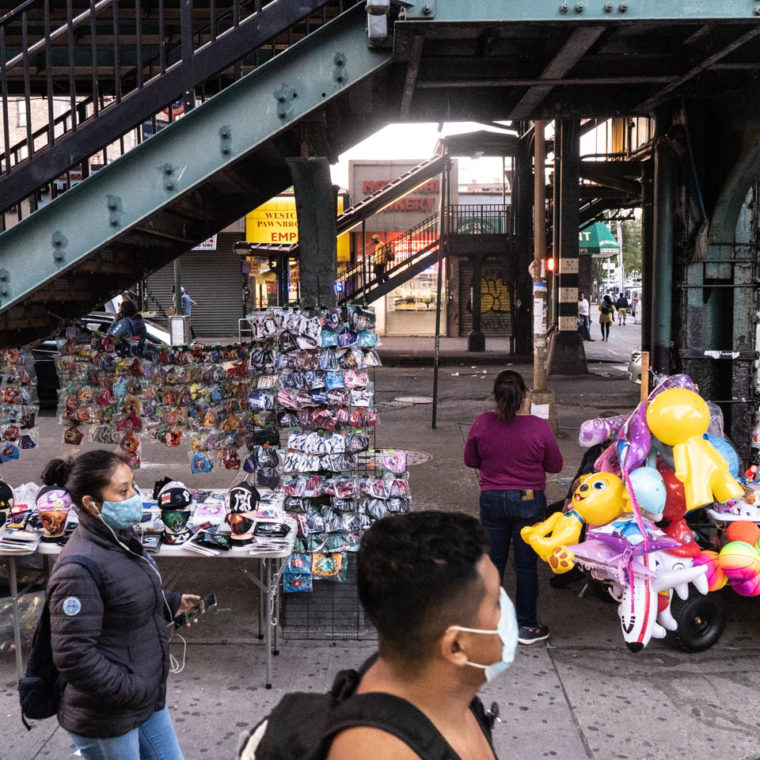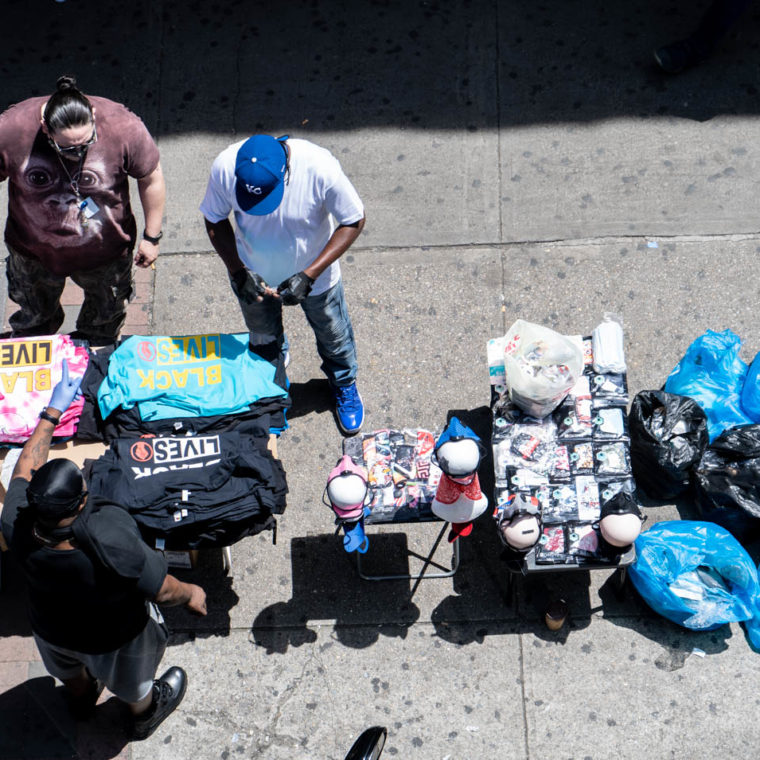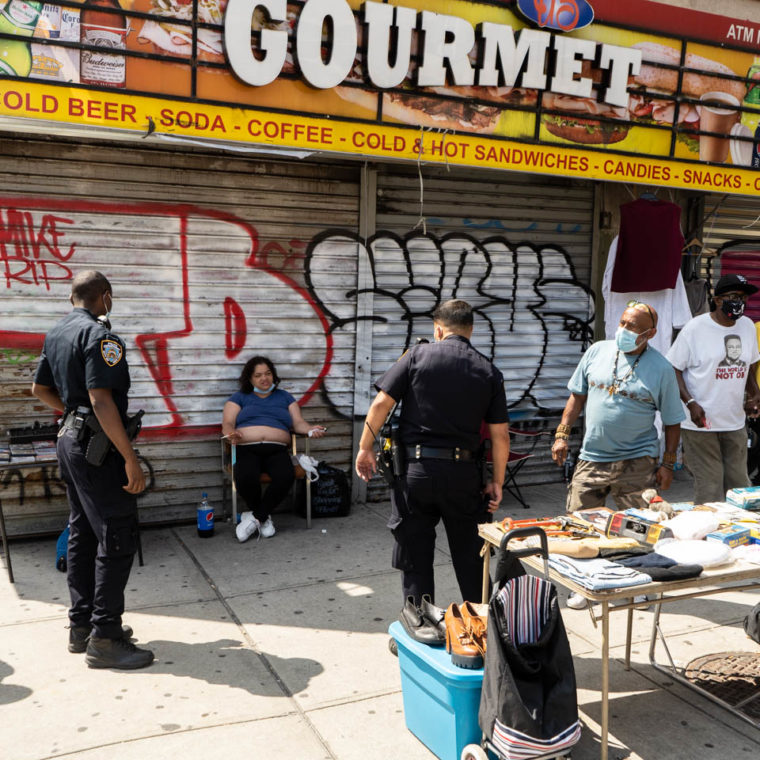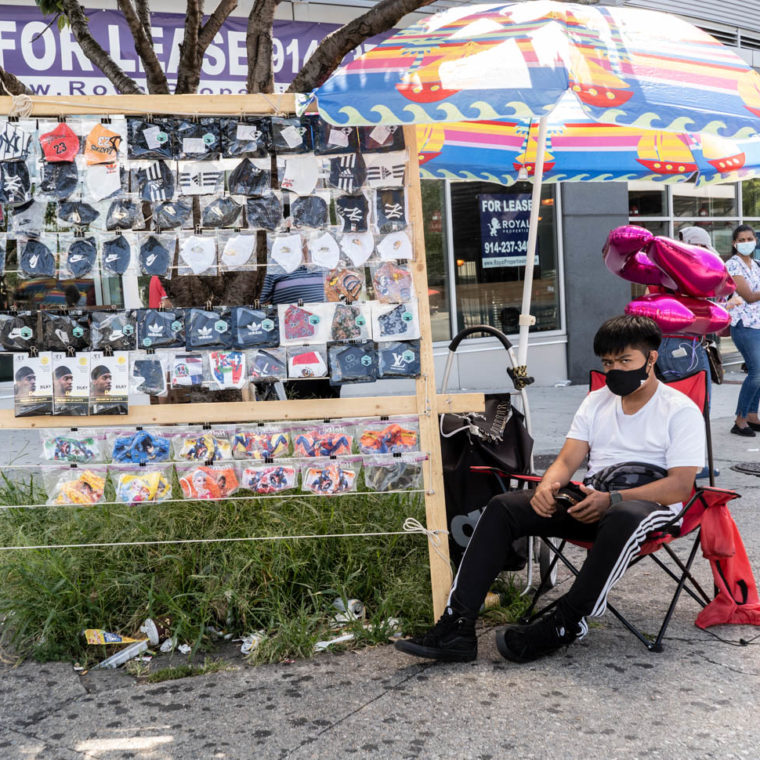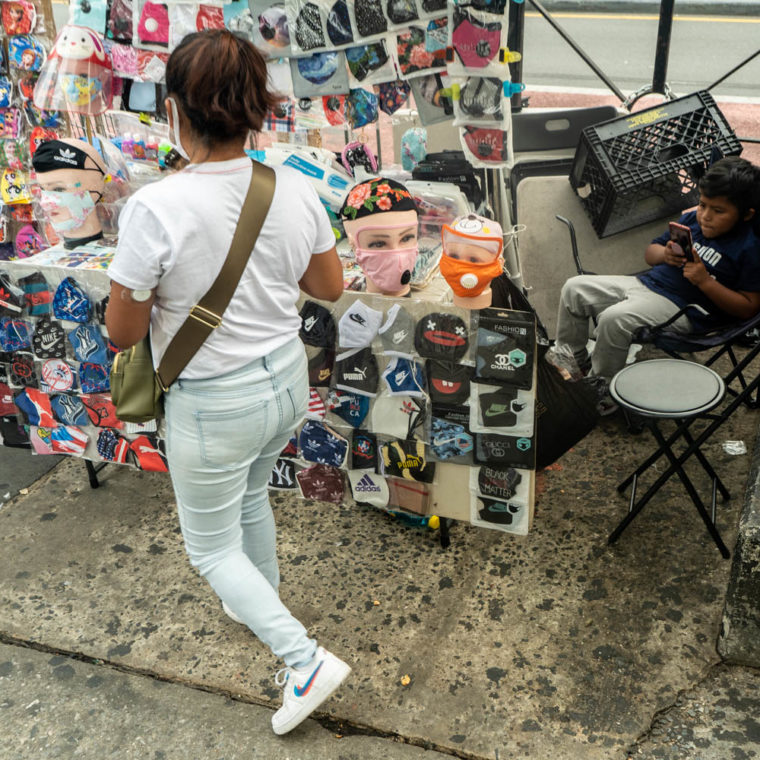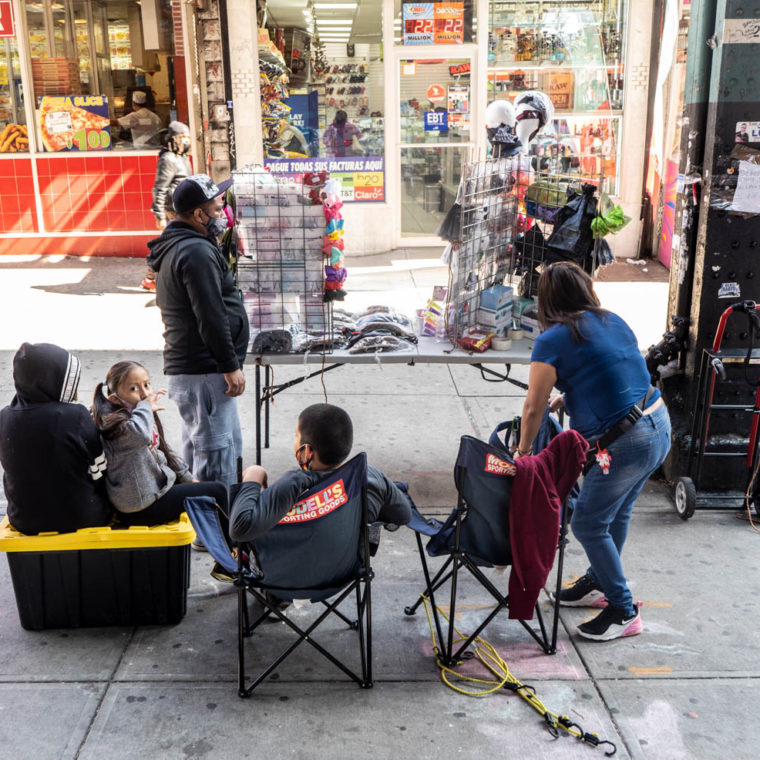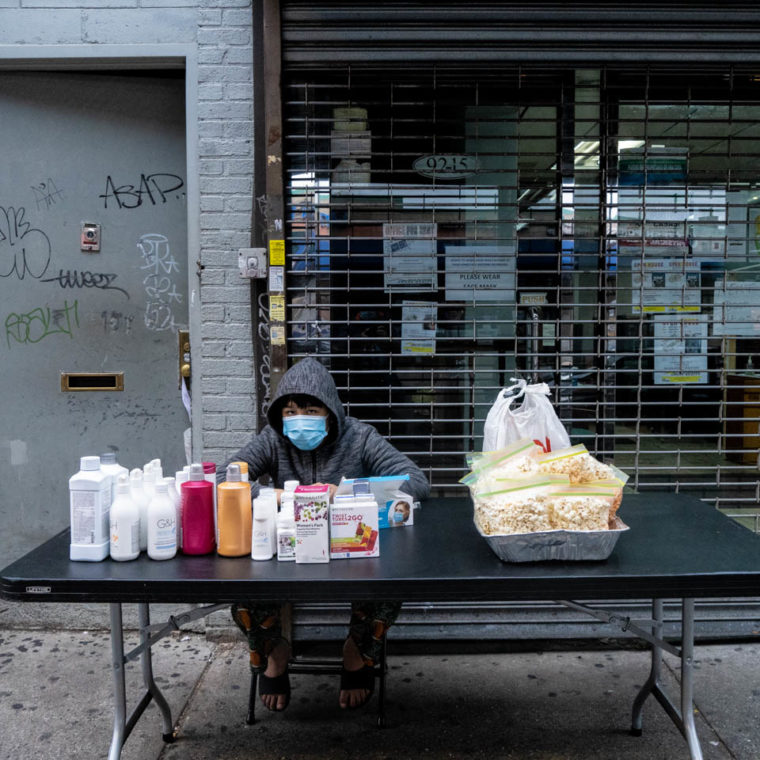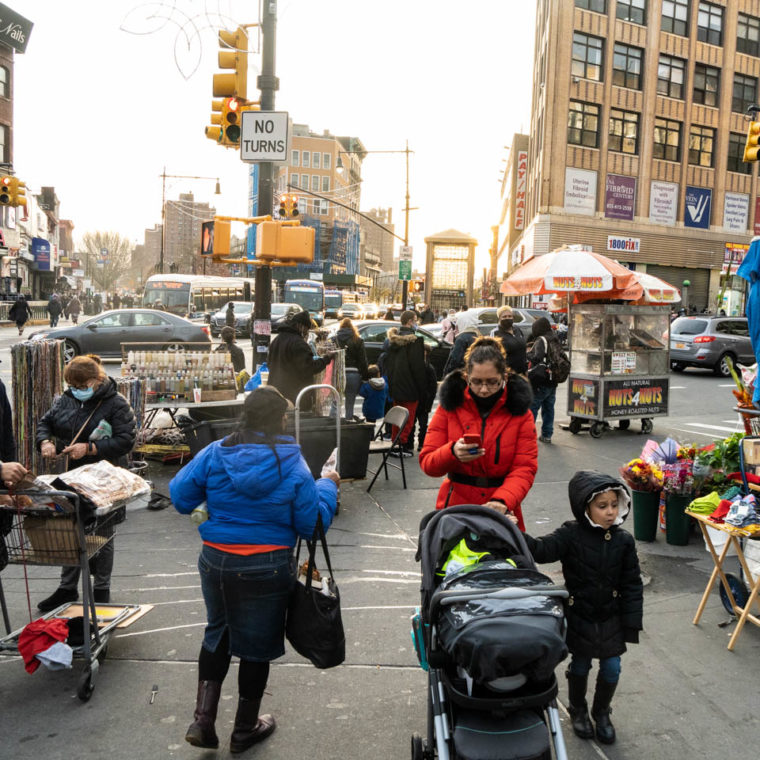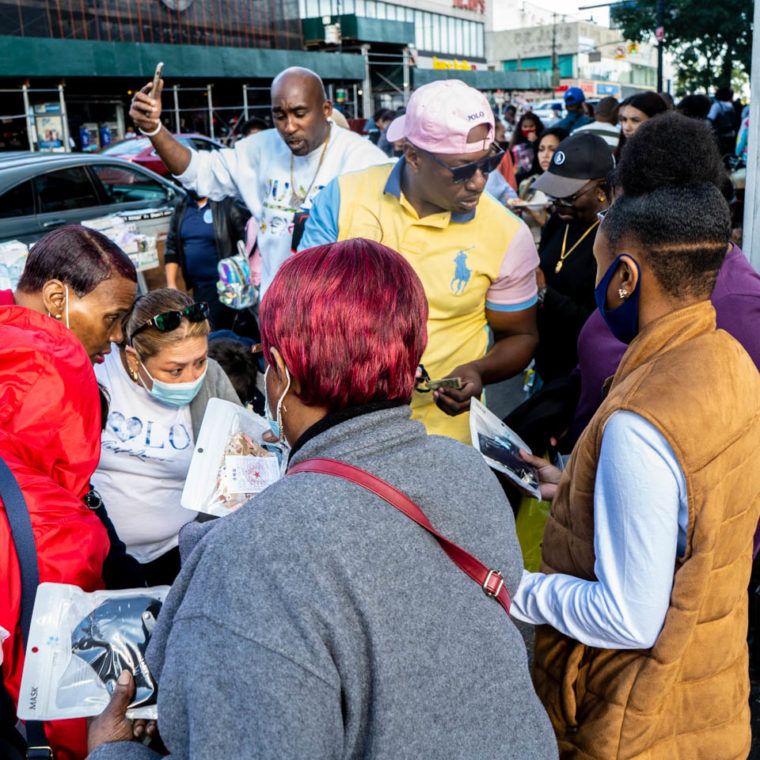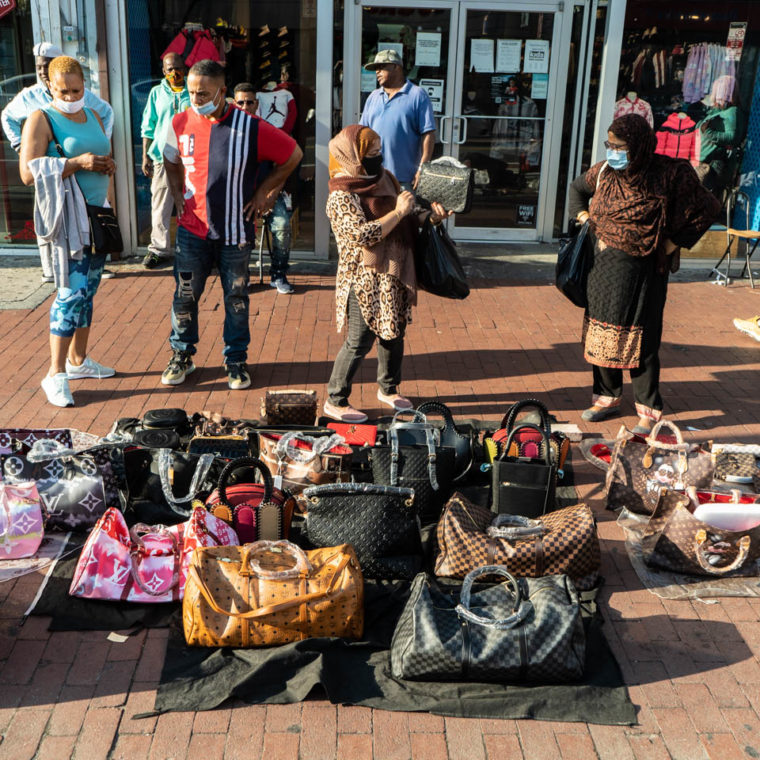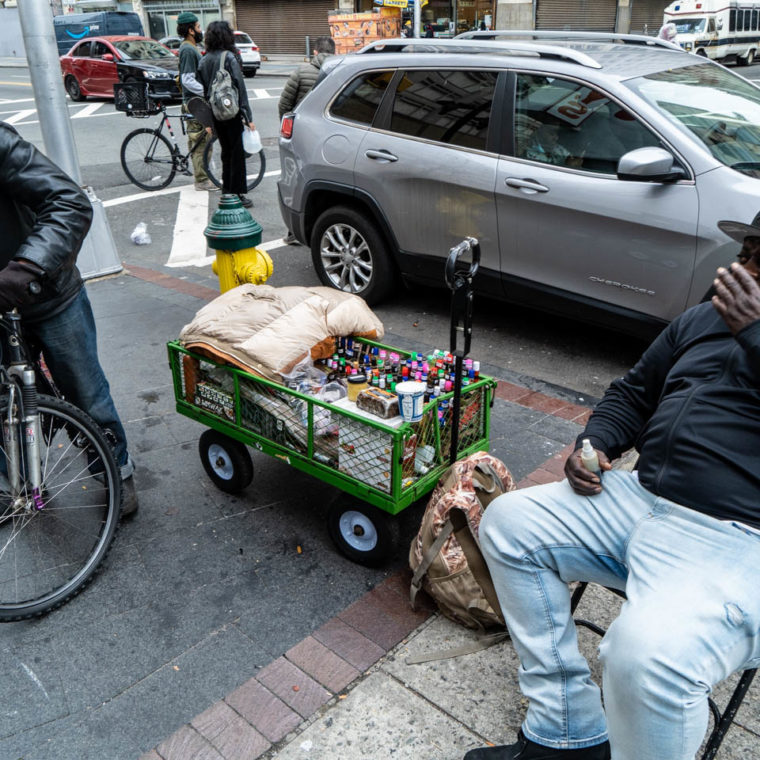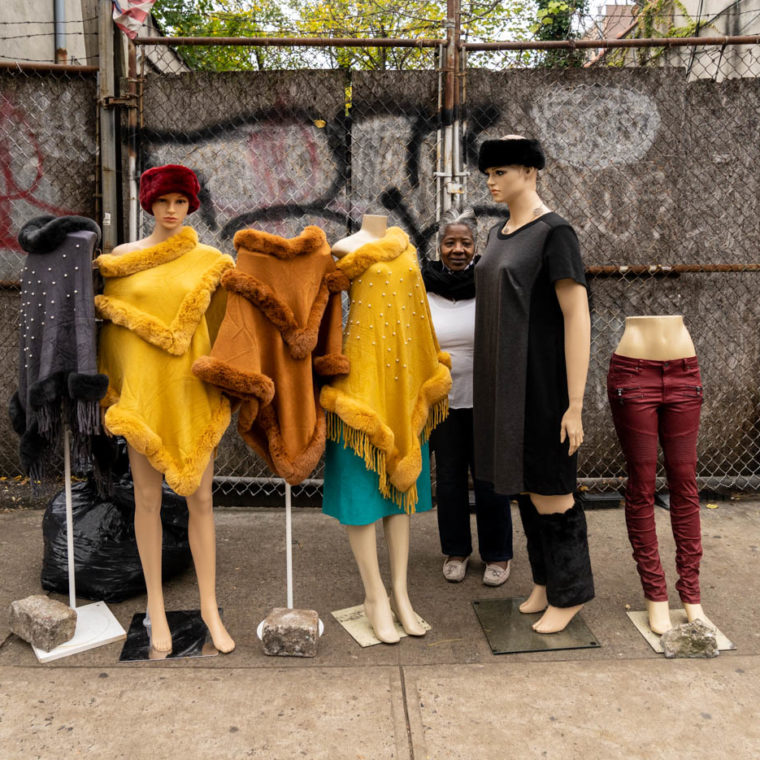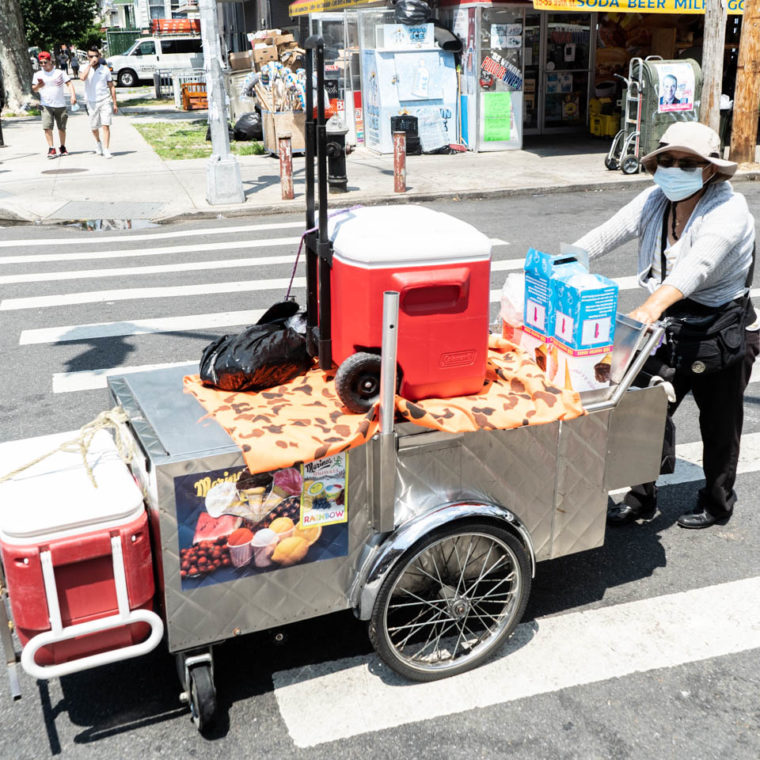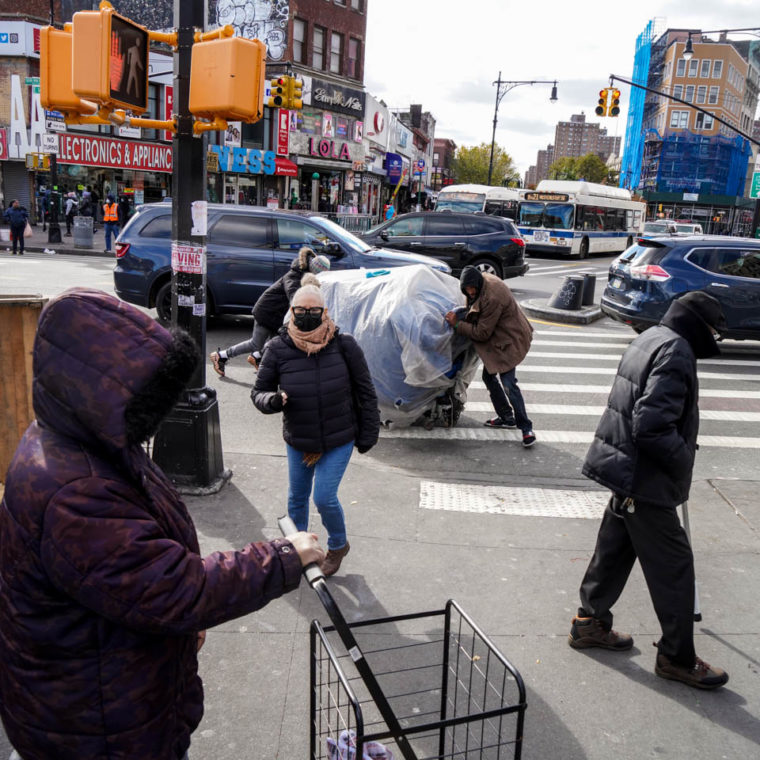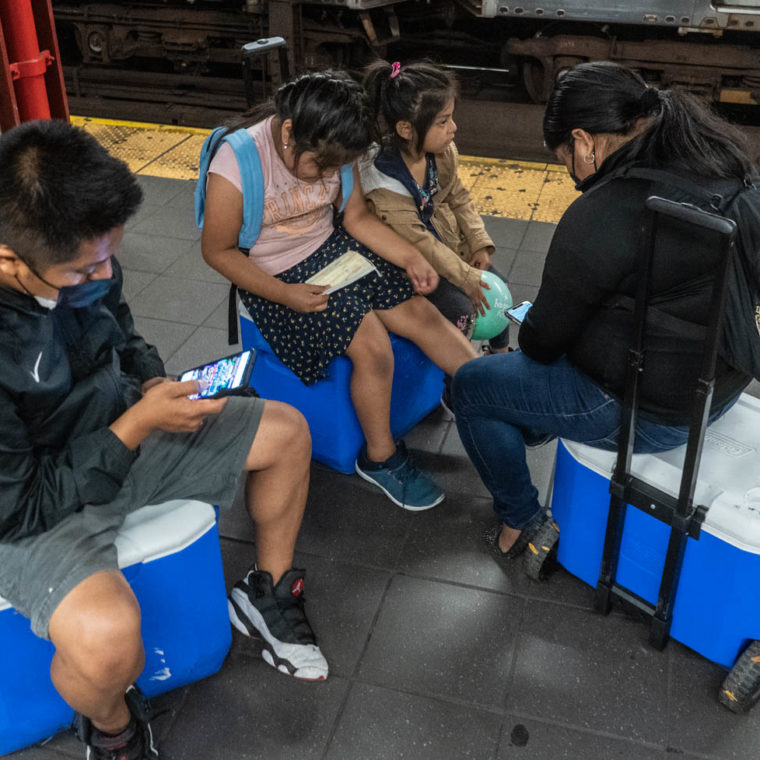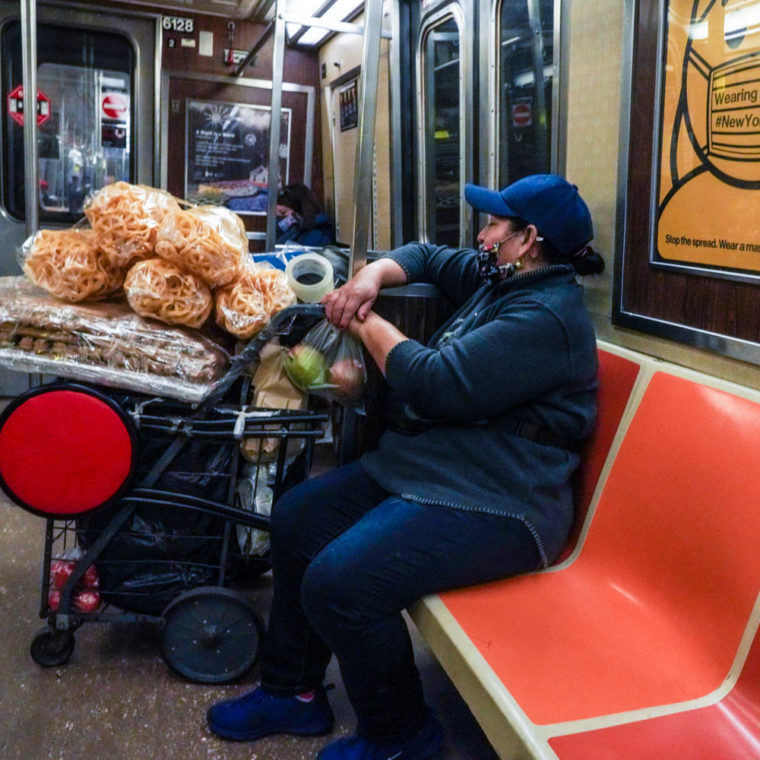Documenting Crossroads: Survival and Remembrance Under the Pandemic
1: Street Vendors: Peddling for Survival
The line of Black and Hispanic street vendors along Roosevelt Avenue in Queens follows the elevated subway tracks for miles. And in the Bronx, peddlers line up for blocks along the four converging streets leading to the intersection known as the Hub. For decades, vendors have been selling produce and other wares in crowded, low-income locations. But restrictions on doing business indoors due to the pandemic have vastly increased their numbers and the variety of products they offer. In New York City’s minority communities, clusters of street peddlers are becoming one alternative to traditional, often closed-down retail shops.
The articles for sale include fruit—papayas, bananas, chunks of watermelon—in Ziploc bags; flowers, jewelry, sometimes homemade; used clothes and shoes; plugs to fit common computerized devices; cellphone protectors, sunglasses, plastic toys, balloons, and celebratory items such as hearts. Food vendors sell prepared juices, hot dogs, corn-on-the-cob, sausages, and assorted beverages. The merchandise for sale varies according to the seasons, national holidays, religious feast days, and other celebrations. Dominican and Colombian vendors often mark their place of business with their country’s flag, Blacks display the African American flag. African vendors sell body oils, beads, and Black soap. Ecuadorians sell colada morada, a traditional fruit drink. Popular items are bags, knockoffs from luxury brands such as Gucci, Fendi, and Louis Vuitton. Flowers are sold everywhere for special occasions such as Mother’s Day and Valentine’s Day, and every day in the proximity of hospitals. Resellers hawk used shoes and clothes.
In April, at the height of the pandemic, the crowds and the vendors disappeared for a while, but by May they were back, and the most popular items were now masks, gloves, and sanitizers. The murder of George Floyd on May 25 made T-shirts and masks with “Black Lives Matter” or “I Can’t Breathe” printed on them best-sellers in African American communities.
If lucky, peddlers pull their food stands with a van. Those running a small operation, such as selling bottled water, boxes of masks, or a few boxes of Advil, walk or take the subway to transport goods to their spot. Insecticide and rat-poison sellers carry their merchandise in a small box and move around yelling, “Veneno, veneno, veneno” or “las cucarachas, las cucarachas.” But most vendors use shopping carts, which allow them to move in and out of a location and to store merchandise during the day. Coolers on wheels are popular for selling foods and drinks. Milk crates, large garbage bags, and cardboard boxes are also used for storage. Plastic is used to protect the merchandise from the elements.
Small children’s heads pop up above a folding table, babies sleep in a stroller placed among boxes of unsold merchandise, and children play video games, as remote, online schooling is impossible with the traffic sounds and the noisy crowds.
The best locations for peddling are near subway entrances and bus stops, where pedestrian traffic is heavy. The elevated subway creates a roof offering protection from the rain, the summer heat, and the traffic. Folding tables displaying merchandise are often placed by the massive iron pillars supporting the elevated trains, and sometimes vendors leave equipment overnight, chained to the pillars.
Peddling on the street is often risky; fights among peddlers over selling spots can get nasty and attract the police, who make vendors move on and give them fines. At the end of the day, though, sales get tabulated. Tomorrow will be another day.
Camilo José Vergara
November 18, 2020
This exhibition has four parts, each with its own dedicated page and image gallery. All pages link to every other exhibition page. The final section also includes “Overheard and Observed,” in which Vergara documents a portion of what he has experienced over the past several months.
- Introduction
- 1: Street Vendors: Peddling for Survival
- 2: Something to Eat: Neighbors Helping Neighbors
- 3: Depicting the Power of the Virus
- 4: Picturing the Lost / Overheard and Observed
Documenting Crossroads: Survival and Remembrance Under the Pandemic: Street Vendors
Click directly on an image to display the caption.

